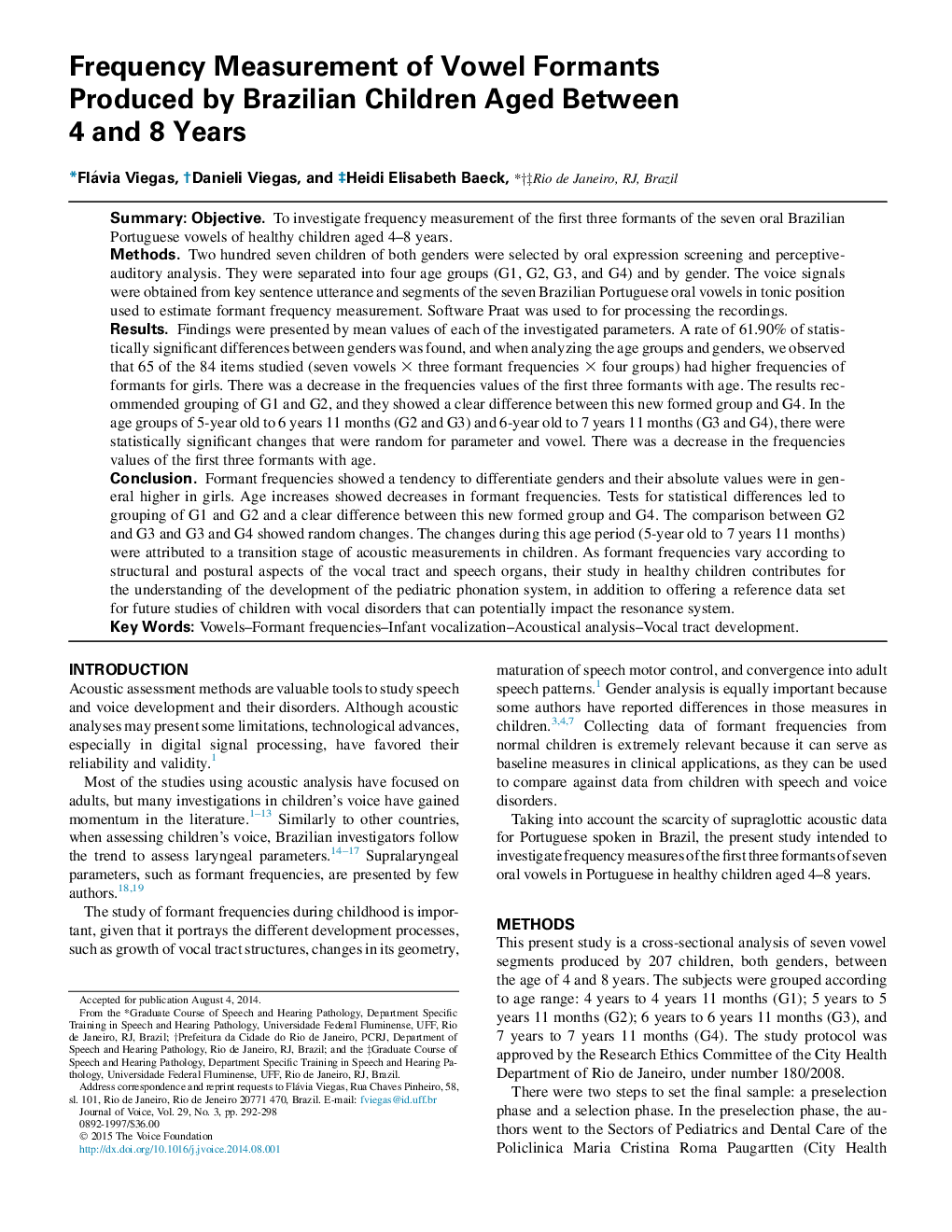| کد مقاله | کد نشریه | سال انتشار | مقاله انگلیسی | نسخه تمام متن |
|---|---|---|---|---|
| 1101404 | 953567 | 2015 | 7 صفحه PDF | دانلود رایگان |
SummaryObjectiveTo investigate frequency measurement of the first three formants of the seven oral Brazilian Portuguese vowels of healthy children aged 4–8 years.MethodsTwo hundred seven children of both genders were selected by oral expression screening and perceptive-auditory analysis. They were separated into four age groups (G1, G2, G3, and G4) and by gender. The voice signals were obtained from key sentence utterance and segments of the seven Brazilian Portuguese oral vowels in tonic position used to estimate formant frequency measurement. Software Praat was used to for processing the recordings.ResultsFindings were presented by mean values of each of the investigated parameters. A rate of 61.90% of statistically significant differences between genders was found, and when analyzing the age groups and genders, we observed that 65 of the 84 items studied (seven vowels × three formant frequencies × four groups) had higher frequencies of formants for girls. There was a decrease in the frequencies values of the first three formants with age. The results recommended grouping of G1 and G2, and they showed a clear difference between this new formed group and G4. In the age groups of 5-year old to 6 years 11 months (G2 and G3) and 6-year old to 7 years 11 months (G3 and G4), there were statistically significant changes that were random for parameter and vowel. There was a decrease in the frequencies values of the first three formants with age.ConclusionFormant frequencies showed a tendency to differentiate genders and their absolute values were in general higher in girls. Age increases showed decreases in formant frequencies. Tests for statistical differences led to grouping of G1 and G2 and a clear difference between this new formed group and G4. The comparison between G2 and G3 and G3 and G4 showed random changes. The changes during this age period (5-year old to 7 years 11 months) were attributed to a transition stage of acoustic measurements in children. As formant frequencies vary according to structural and postural aspects of the vocal tract and speech organs, their study in healthy children contributes for the understanding of the development of the pediatric phonation system, in addition to offering a reference data set for future studies of children with vocal disorders that can potentially impact the resonance system.
Journal: Journal of Voice - Volume 29, Issue 3, May 2015, Pages 292–298
